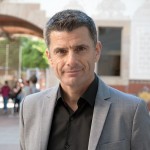
Pedro Olalla likes to stroll around the places in Athens where concepts like citizenship and participation were forged, not to retrieve them like fossils, but to remind us what our worn-out democracy could be like and isn’t. The Hellenist returned to Barcelona in May to present his latest work: a reflection on old age and the aging society.
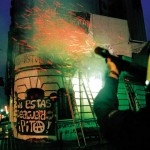
The squat at the Princesa cinema in October 1996 was the first important action to question the ‘Barcelona model’. The philosopher and activist Marina Garcés traces in her latest book the amalgam of movements that raised a radical criticism of the model and the historical story that justified it.

This cooperative was set up at the end of the Franco era to defend the workers. Today it has seven offices and more than 80 members defending the underdog in court, be they victims of asbestos or of bank abuse. Their legal crusades target the new exclusions, the growing precariousness in employment and the decline in rights and freedoms.
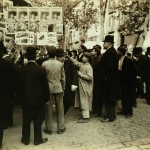
The first kiosks were built in Barcelona in the mid-19th century, either to sell products or shelter musical performances. However, the first newspaper kiosk was the initiative of an evening paper born in 1888: El Noticiero Universal. From La Rambla, newspaper kiosks spread throughout the city.
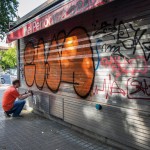
The last few years haven’t been kind to sellers of printed press. Over the course of a decade, 35% of kiosks in Barcelona have closed. The recession –and, above all, new ways of getting information– are causing many to shut down. Aware of the problem, the sector and the administration are taking on a necessary reconversion.
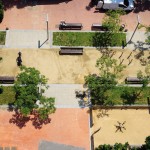
There are about 50 interior gardens open to the public in the Eixample. And in each block interior we find this reduced microcosm, each with its own particularities and features. But they all have certain things in common: spaces for leisure use, their imitation of nature and their perceptual isolation, which facilitates neighbourhood socialising.
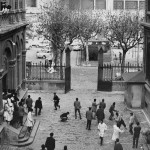
It is half a century now since May 1968 in France. In Catalonia, the unrest unleashed a frantic race to show who was the most left-wing, and could take over from the PCE-PSUC as the revolutionary party of the working class. The discourse of the counterculture, meanwhile, added a cultural and subjective dimension to the political struggle: the argument was that the revolution had to begin within each individual.

() Tres llibres inauguren la col·lecció “Biblioteca Secreta”, tres volums que recuperen personatges necessaris de la Barcelona més underground. Pep Gómez escriu sobre Pepe Otal, Joan Vinuesa narra el seu viatge a l’Índia i Xavi Cot explica què va ser el Cuc Sonat.
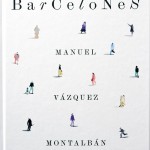
The book Vázquez Montalbán published in 1987 and which has now been republished in Spanish and translated into Catalan and English would be the ideal book because at the same time as you read it you can tour it as though it were a city.
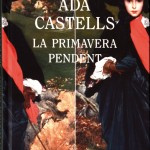
Comanegra is celebrating the two-hundredth anniversary of Mary Shelley’s novel with seven new titles in which the monster is present and which are set against great moments in the life of the city.
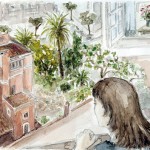
The clinic where I was born was turned into an old people’s home, then it became an empty space and finally it was squatted in and then cleared. But it hasn’t been knocked down.

The Panikkar Year inaugurated on February 5th commemorates the hundredth anniversary of the birth of the philosopher, and has a double objective: to promote his work and debate on the validity of his thoughts on understanding the current world.
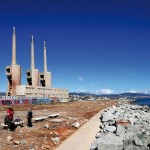
A look at some initiatives designed to improve the urban landscape with a new vision of our cultural heritage, through proposals from the International Master’s Degree in Landscape Intervention and Heritage Management.

Climate change and air pollution have driven the world’s great cities towards a change in paradigm. After a century of cars ruling the streets, the largest metropolises are starting to restrict their use.

The ecofeminist activist Vandana Shiva, who visited Barcelona in January, suggests changing our current mental framework –oriented towards dominating the Earth– for another based on life and respect for biodiversity.

() Esteve Lucerón recull els últims anys de la Perona gitana, quan el barri vivia des de feia temps en el conflicte i l’exclusió, i ho fa sense prejudicis i amb naturalitat.
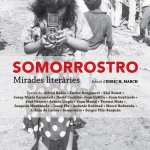
Somorrostro was inhabited by a working population that was all too often looked upon as marginalised people who did nothing to escape their condition.
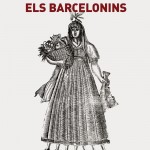
The book by Pujol Cruells is neither pleasing nor insulting. By means of the passing of the year, he draws an image of the people of Barcelona based on a meticulous observation of their customs, oddities and craziness.

These days, not even the neighbourhood’s own mother would recognize it. Still, it’s worth saying that the change has been for the better.

Under the Eixample there are the same streets as on the surface, though much narrower, and they reflect the life outside and that of the houses above.

As an architect and town-planner, Puig i Cadafalch left a profound and lasting mark on Barcelona. But as a politician, despite the importance of his role as successor to Prat de la Riba at the head of the Mancomunitat of Catalonia, his work has been questioned.
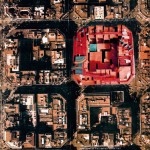
An exhibition by the Escola d’Arquitectura (College of Architecture) has gathered the best graduation projects since 1978. This article presents a small sample of this work, as seen by its authors, practising architects who have agreed to take part in the experiment of returning to the past and contextualising it in the present.
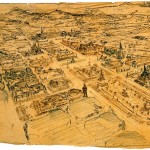
What would the other Barcelona have been like? The one that was imagined but frustrated for financial or political reasons or because of changing fashions, the one that was put away in a drawer to wait for better times or the one of projects short-listed in competitions they didn’t win in the end. We visit it on the following lines.

Officially, science was a man’s affair in Barcelona until very recently. This can be seen, for example, in the gallery of names of illustrious academics in the Paranimf of the University of Barcelona, which only includes one woman: 17th-century philosopher Juliana Morell. However, if we look under the surface, we find that women have in fact been involved in the scientific and technical life of the city in many different ways.
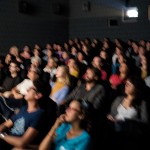
From the 70´s, the historical establishments – neighbourhood cinemas and other, classier, first – run downtown cinemas – came up time and again against the challenge of survival. Throughout this struggle, and over and above the overpowering creeping commercialism, alternative circuits have been established that have allowed new experiences for cinema-lovers while preserving the best of the traditional ones.

The second debate in the series organised by Barcelona en Comú under the general title ‘Dret i defensa del Comú’ (‘The Law and Defence of the Commons’) brought together during the month of November the acclaimed activist Naomi Klein, author of a damning account of ‘shock doctrine’, and the Mayor of Barcelona, Ada Colau.

Fabre is one the journalists who best knows his city. He wrote a splendid doctoral thesis on 1939 Barcelona and played a decisive role in safeguarding the memory of his guild. His new book, which avoids moral condemnation, returns to the post-war world of journalism.

Harry Crews said that talent wasn’t a bad thing in literature, but what mattered was courage. Zanón has more than enough. He speaks of parents and children and grandmothers, of Horta and Guinardó, of the bourgeoisie or of ‘the bottom of the middle class’. When he gets stuck into his neighbourhood and background, his talent spurts like a geyser.
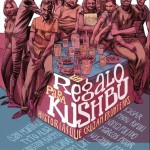
For some time now, non-fiction not only fills the pages of well-known writers like Capote, Mailer, Carrère or Caparrós, but also the illustrated pages of graphic novels, which have allowed the rigorous and socially committed binomium between journalism and comics. Un regalo para Kushbu is the closest example we have in time and space of this hybridisation of genres.
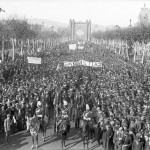
In the midst of a major political and social crisis, the CNT and UGT trade unions, supported by the PSOE and the republican parties, called a revolutionary general strike in the summer of 1917. The Russian Revolution was well underway and it raised hopes that were unrealistically optimistic.
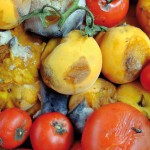
In Catalonia, 7% of all food purchased by families, restaurants and shops each year is wasted. Food waste is a global problem which can be fought by means of better laws and social projects, in addition to individual and household initiatives.
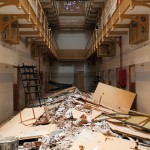
The Model prison has since been emptied of its prisoners. Now, for the residents in this part of the city, it represents both an opportunity and a danger, as they watch to see what sort of restoration will be given to this large chunk of their neighbourhood, following four decades of calls for the prison’s closure in order to make way for amenities, green spaces and schools.

For the Kenyan novelist and essayist Ngũgĩ wa Thiong’o, language is the custodian of identity and a tool to be used against colonial domination. On the publication of several of his books in Catalan and Spanish translations, the Catalan PEN Club invited him to the CCCB to speak on writing and emancipation.

Dalí i Barcelona [Dalí and Barcelona] Author: Ricard Mas Publisher: Barcelona City Council 555 pages Barcelona, 2017 In 1974 my parents took me to a Dalí “happening” at Plaça de la Porxada in Granollers. Dalí was surrounded by an impressive
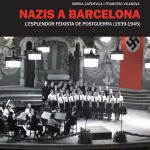
Nazis a Barcelona. L’esplendor feixista de postguerra (1939-1945) [Nazis in Barcelona. The fascist splendour of the post-war period (1939-1945).] Authors: Mireia Capdevila and Francesc Vilanova Publisher: L’Avenç and Barcelona City Council 227 pages Barcelona, 2017 It is no secret that

The poet Josep Pedrals talks to us about his neighborhood in rhymed form.
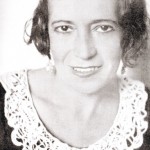
The years of the Spanish Republic were a golden age for Aurora Bertrana, not only from a literary point of view but also for her public activism.

Talking to them about the profound changes that have occurred in the music industry in the last twenty years, they don’t relate to it. Born in the eighties, Pau Vallvé, Clara Peya and Maria Arnal have no links to that old world whatsoever.
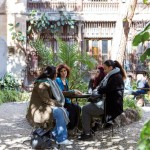
Over the last five years, artists from very different cultures have come through the Associació Jiwar – jiwar means “neighbourhood” in Arabic. The association is the driving force behind a project that stands for artistic creativity as a tool for change and for rethinking the city.
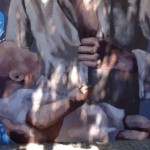
Arantxa Berganzo i Ràfols
Since the appearance of the first graffiti in the mid-1980s, Barcelona has had a rather tempestuous relationship with this new form of artistic expression in its public space. There are three main characters in this story: the artists, the authorities and the public. In the following pages we will analyse how their relationship has evolved over the last three decades.
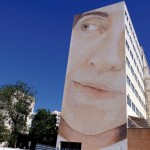
Arantxa Berganzo i Ràfols
The legacy of Barcelona’s artists, some of whom have achieved wide renown, has been enriched by contributions from high profile artists from around the world.

There is a form of pollution that is more subtle and invisible than that of air or water. It’s inside the human body. Endocrine disruptors are substances found in food, household and office items, cleaning products, cosmetics, etc., which all build up in the body. The scientific evidence is solid, but most governments look away. Nevertheless, the European Commission has missed all the deadlines for restricting disruptors.

A number of simple, tried and tested rules can reduce a typical city-dweller’s exposure to hormone disrupters.

Mariana Mazzucato, Professor in the Economics of Innovation at University College London, has carved out a significant niche for herself in academic circles by debunking the big ideological myths surrounding private enterprise. In April, she was a guest speaker at the CCCB’s lecture series on the impact of information technologies on the economy and on democracy.
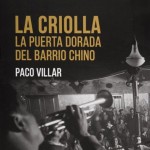
Transvestitism and brazen homosexuality reigned supreme on Carrer del Cid. So, too, did treachery, dishonesty and the broken, questionable condition of the people. The owner of La Criolla, who presided over a bar that would turn from a seedy joint into a hotspot, started by playing dirty and ended up worse off.
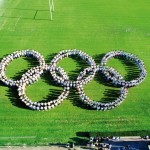
It is in the squares and streets of the Barcelona of 1992 – the city whose Olympic mascot was Cobi, a Catalan sheepdog – where the author sets the story of Ferran Simó, a young man that war, in the words of the narrator, has turned into a dog. Baulenas once again adds touches of magical realism to the novel.
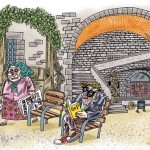
In that time, for me not having papers used to mean (means) lacking facts. But there was nothing to fear in the library.
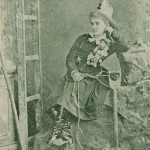
During the final third of the 19th century, feminist and anti-slavery thoughts and actions could have consequences. The composer and harpist Clotilde Cerdà i Bosch, daughter of the painter Clotilde Bosch and her husband Ildefons Cerdà, experienced it first-hand.
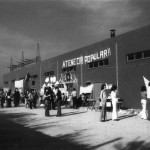
The demolition of a polluting asphalt plant in early 1977, by the very residents who were suffering its effects, lay at the heart of the Nou Barris Athenaeum, a leading player in the social mobilisation and cultural revitalisation of the city’s northern neighbourhoods after the death of the Spanish dictator, Franco.
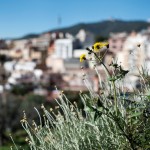
Taking a positive view of city smells opens the door to considering them as an element of urban marketing. Deodorising cities and making them identical on an olfactory level – with the same smells everywhere – is one of the results of modern town planning, which insists on stripping public spaces of any emotion.




















































